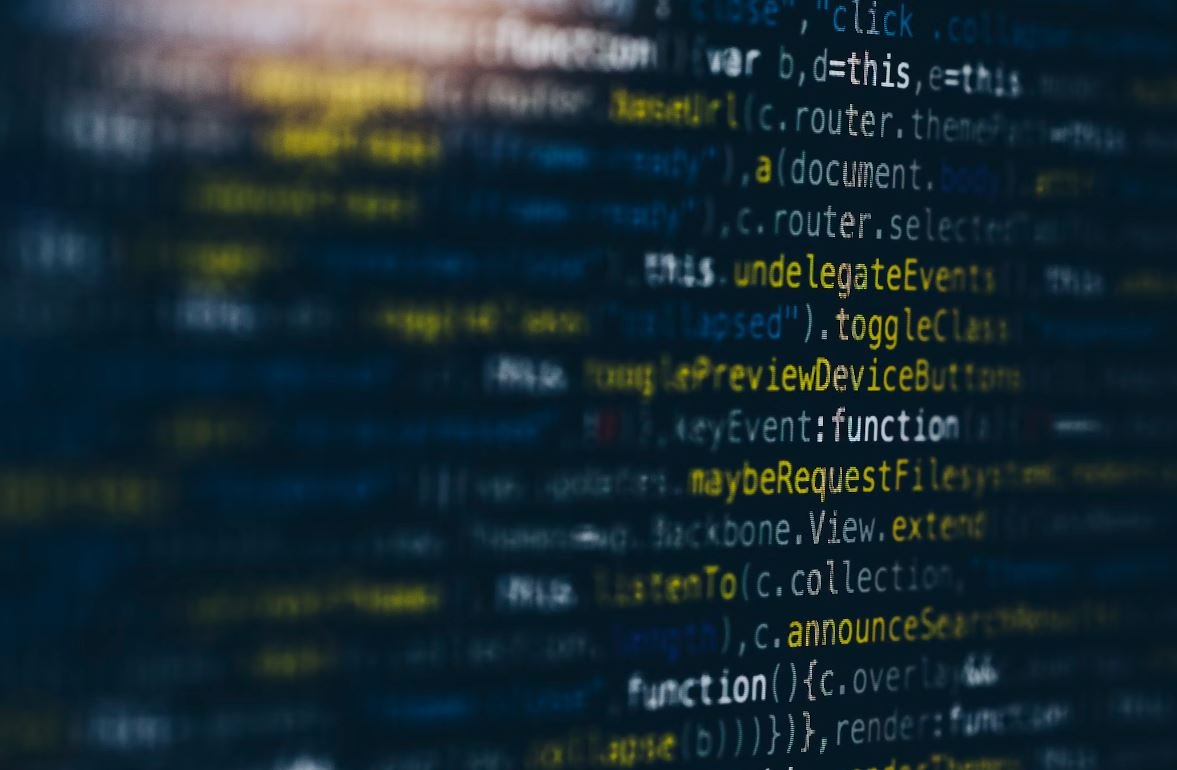Writing and Balancing Chemical Equations
Chemical equations are vital in understanding chemical reactions and their stoichiometry. A balanced chemical equation accurately describes the reactants and products involved in a chemical reaction. It helps scientists and chemists make predictions and calculations regarding the quantities of substances involved.
Key Takeaways:
- Chemical equations describe chemical reactions and their stoichiometry.
- A balanced chemical equation accurately represents the reactants and products in a chemical reaction.
- Writing and balancing chemical equations allows for predictions and calculations.
When writing a chemical equation, it is important to include all reactants and products, ensuring that the law of conservation of matter is followed. The law of conservation of matter states that matter cannot be created or destroyed in a chemical reaction, only rearranged. Each atom must be accounted for on both sides of the equation.
For example, the combustion of methane (CH4) can be represented by the following chemical equation: CH4 + 2O2 → CO2 + 2H2O.
In order to balance a chemical equation, coefficients are added to the reactants and products to ensure the same number of atoms on both sides. Coefficients represent the relative number of molecules or formula units involved in the reaction. The subscripts within the chemical formulas should never be changed, as they represent the identity and ratio of atoms within the molecule.
Table 1: Common Chemical Reactions
| Reaction Type | General Form |
|---|---|
| Combination/Synthesis | A + B → AB |
| Decomposition | AB → A + B |
| Single Displacement/Replacement | A + BC → AC + B |
By balancing chemical equations, scientists can determine the stoichiometry of a reaction, which refers to the mole ratio of reactants and products. This information is crucial for determining the amounts of substances needed or produced in a reaction.
For instance, a balanced equation for the reaction between iron (Fe) and oxygen (O2) is 4Fe + 3O2 → 2Fe2O3. This equation indicates that 4 moles of iron react with 3 moles of oxygen to produce 2 moles of iron(III) oxide.
Table 2: Common Elements and Their Valences
| Element | Valence |
|---|---|
| Hydrogen | +1 |
| Oxygen | -2 |
| Chlorine | -1 |
Understanding the valence of elements is also crucial when writing and balancing chemical equations. Valence is the combining power of an element and determines the charge that the element can acquire or lose during a reaction.
It is important to note that chemical reactions must obey the law of conservation of mass and charge. This means that the number of atoms, as well as the total charges, must be the same on both sides of the equation.
Table 3: Ionic Charges of Common Polyatomic Ions
| Polyatomic Ion | Charge |
|---|---|
| Nitrate | NO3– |
| Sulfate | SO42- |
| Carbonate | CO32- |
In conclusion, writing and balancing chemical equations is a fundamental skill in chemistry. It allows us to accurately represent chemical reactions and make predictions about the quantities of substances involved. By following the law of conservation of matter and considering valence and charges, scientists can gain valuable insights into chemical reactions and stoichiometry.
Common Misconceptions
Misconception: Compounds are always written with subscripts in a chemical equation
One common misconception is that compounds must always be written with subscripts in a chemical equation. However, this is not always the case. Some compounds may exist as elements in their pure form or as polyatomic ions that do not require subscripts.
- Ammonia (NH3) does not require subscripts because it is a polyatomic ion.
- Oxygen gas (O2) can exist in a chemical equation without subscripts as it is in a diatomic form.
- Pure metals, such as copper (Cu) or silver (Ag), do not need subscripts as they exist as single atoms in their elemental form.
Misconception: Coefficients must always be whole numbers in a balanced equation
Another common misconception is that coefficients in a balanced equation must always be whole numbers. While whole numbers are preferred to simplify the equation, coefficients can actually represent fractions or decimals in certain cases.
- The balanced equation for the combustion of methane (CH4) is 1 CH4 + 2 O2 → 1 CO2 + 2 H2O.
- In this equation, the coefficients represent the ratio of molecules reacting and being produced, not just whole numbers of molecules.
- Coefficients can be adjusted to maintain the correct ratio, even if they are fractions or decimals, as long as the equation is balanced.
Misconception: Only the number of atoms must be balanced in a chemical equation
Many people think that balancing a chemical equation involves only balancing the number of atoms on each side of the equation. However, it is also essential to consider the overall charge and mass conservation.
- Equations involving ions must balance the charge on both sides by adding appropriate coefficients to the compounds or balancing through the addition of spectator ions.
- In equations involving redox reactions, where there is a transfer of electrons, the number of electrons must also be balanced.
- Conservation of mass is critical in balancing equations, ensuring that the total mass of reactants is equal to the total mass of products.
Misconception: Balancing the equation requires changing the subscripts of compounds
Many people believe that balancing an equation involves changing the subscripts of compounds in order to achieve the desired balance. However, this is not correct as it violates the Law of Definite Proportions, which states that elements in a compound are present in fixed ratios.
- Subscripts represent the ratio of atoms within a compound and cannot be changed in order to balance the equation.
- Instead, coefficients are added as the whole number multipliers to balance the equation.
- Changing the subscripts would result in a different compound altogether, which goes against the fundamental principles of chemical reactions.
Misconception: Balancing equations is a time-consuming and complicated process
Many people find balancing chemical equations daunting and time-consuming. However, with practice and understanding the fundamental concepts, balancing equations can become a simpler and more efficient process.
- Using systematic approaches, such as starting with the most complex compounds and elements, can simplify the balancing process.
- Understanding the conservation laws, such as mass and charge conservation, can aid in balancing equations effectively.
- With practice and familiarity, one can develop an intuition for balancing equations and spot common patterns.
Background Information
Chemical equations are a fundamental aspect of chemistry. They represent the chemical reactions that occur when substances interact with each other. Writing and balancing chemical equations is crucial to understanding and predicting the outcomes of these reactions. In this article, we explore various examples and concepts related to chemical equations. Each table sheds light on different aspects of this important topic.
Table 1: Types of Chemical Reactions
Table 1 highlights different types of chemical reactions. It lists the main types, provides examples, and specifies whether the reaction is exothermic or endothermic.
| Type of Reaction | Example | Exothermic/Endothermic? |
|---|---|---|
| Combustion | Hydrocarbon + Oxygen → Carbon Dioxide + Water | Exothermic |
| Synthesis | 2 Na + Cl2 → 2 NaCl | Exothermic |
| Decomposition | 2 H2O → 2 H2 + O2 | Endothermic |
| Single Displacement | Zn + CuSO4 → ZnSO4 + Cu | Exothermic |
Table 2: Common Chemical Symbols
In table 2, we showcase some common chemical symbols used to represent elements. It provides the element’s name, symbol, atomic number, and atomic mass.
| Element Name | Symbol | Atomic Number | Atomic Mass (g/mol) |
|---|---|---|---|
| Hydrogen | H | 1 | 1.008 |
| Carbon | C | 6 | 12.011 |
| Oxygen | O | 8 | 15.999 |
| Iron | Fe | 26 | 55.845 |
Table 3: Stoichiometric Coefficients
Table 3 focuses on stoichiometric coefficients, which relate the number of moles of each element or compound involved in a chemical reaction. It demonstrates how to balance a simple equation and provides the coefficients for each species.
| Reactant or Product | Coefficient |
|---|---|
| N2 | 3 |
| H2 | 1 |
| NH3 | 2 |
Table 4: Law of Conservation of Mass
Table 4 emphasizes the Law of Conservation of Mass. It provides the masses of reactants and products in grams to show how the total mass remains constant before and after a reaction.
| Reactant | Mass (g) |
|---|---|
| CaCO3 | 100 |
| HCl | 36.5 |
| Product | Mass (g) |
| CaCl2 | 110.98 |
| CO2 | 44.01 |
| H2O | 18.02 |
Table 5: Balancing Multiplication Factors
Table 5 illustrates the concept of balancing multiplication factors. It shows how multiplying the coefficients of reactants and products maintains the equation’s balance.
| Reactant or Product | Initial Coefficient | New Coefficient (2x) |
|---|---|---|
| Na2SO4 | 1 | 2 |
| KCl | 2 | 4 |
| K2SO4 | 3 | 6 |
Table 6: Net Ionic Equations
Table 6 shows examples of net ionic equations, which focus only on the ions involved in the reaction, omitting spectator ions. It demonstrates the net ionic equations for various reactions.
| Reaction | Net Ionic Equation |
|---|---|
| AgNO3(aq) + NaCl(aq) → AgCl(s) + NaNO3(aq) | Ag+(aq) + Cl-(aq) → AgCl(s) |
| HCl(aq) + NaOH(aq) → H2O(l) + NaCl(aq) | H+(aq) + OH-(aq) → H2O(l) |
Table 7: Redox Reactions
Table 7 outlines different redox reactions, showcasing the species being oxidized and reduced. It also includes the half-reactions and the overall balanced equation.
| Redox Reaction | Oxidizing Agent | Reducing Agent |
|---|---|---|
| Zn(s) + 2 HCl(aq) → ZnCl2(aq) + H2(g) | 2 H+(aq) | Zn(s) |
| 2 Al(s) + 3 CuCl2(aq) → 2 AlCl3(aq) + 3 Cu(s) | 3 Cu2+(aq) | 2 Al(s) |
Table 8: Precipitation Reactions
Table 8 showcases precipitation reactions where reactants combine to form an insoluble solid called a precipitate. It lists the reactants, products, and the precipitate formed.
| Reaction | Reactants | Products | Precipitate |
|---|---|---|---|
| AgNO3(aq) + NaCl(aq) → AgCl(s) + NaNO3(aq) | AgNO3(aq) + NaCl(aq) | AgCl(s) + NaNO3(aq) | AgCl(s) |
| Pb(NO3)2(aq) + 2 NaI(aq) → PbI2(s) + 2 NaNO3(aq) | Pb(NO3)2(aq) + 2 NaI(aq) | PbI2(s) + 2 NaNO3(aq) | PbI2(s) |
Table 9: Acid-Base Reactions
Table 9 exemplifies acid-base reactions, where an acid reacts with a base to form salt and water. It provides the reactants, products, and the salt formed.
| Reaction | Acid | Base | Salt |
|---|---|---|---|
| HCl(aq) + NaOH(aq) → H2O(l) + NaCl(aq) | HCl(aq) | NaOH(aq) | NaCl(aq) |
| H2SO4(aq) + 2 KOH(aq) → 2 H2O(l) + K2SO4(aq) | H2SO4(aq) | KOH(aq) | K2SO4(aq) |
Table 10: Examples of Balanced Chemical Equations
Table 10 presents various balanced chemical equations to showcase the writing and balancing process. It demonstrates the reactants and products of each equation.
| Chemical Equation | Reactants | Products |
|---|---|---|
| H2 + Cl2 → 2 HCl | H2 + Cl2 | 2 HCl |
| 2 Na + 2 H2O → 2 NaOH + H2 | 2 Na + 2 H2O | 2 NaOH + H2 |
All these tables provide valuable insights into the world of writing and balancing chemical equations. Understanding these concepts is crucial for any student or enthusiast seeking to delve into the fascinating realm of chemistry. By grasping the relationships between reactants and products, as well as the principles of stoichiometry, one can predict and interpret chemical reactions with confidence.
Writing and Balancing Chemical Equations – Frequently Asked Questions
Question: What is a chemical equation?
A chemical equation represents a symbolic representation of a chemical reaction, showing the reactants and products involved.
Question: How do you write a chemical equation?
To write a chemical equation, you need to identify the reactants and products of the reaction and place them on the left and right sides, respectively. Use chemical formulas and coefficients to properly balance the equation.
Question: What is the purpose of balancing a chemical equation?
Balancing a chemical equation ensures that the law of conservation of mass is obeyed. This means that the total number of each type of atom is the same on both sides of the equation.
Question: How do you balance a chemical equation?
To balance a chemical equation, adjust the coefficients in front of the chemical formulas until the number of atoms for each element is the same on both sides of the equation. Avoid changing the subscripts as they represent the chemical formula of a substance.
Question: What are coefficients in a chemical equation?
Coefficients are the numbers placed in front of the chemical formulas in a balanced chemical equation. They denote the relative number of molecules or formula units of each substance involved in the reaction.
Question: What is the difference between a balanced and unbalanced chemical equation?
A balanced chemical equation has an equal number of atoms for each element on both sides, satisfying the law of conservation of mass. An unbalanced chemical equation does not fulfill this requirement.
Question: Can a chemical equation be balanced without changing the subscripts of the chemical formulas?
No, balancing a chemical equation normally requires changing the coefficients in front of the chemical formulas. Changing the subscripts would represent a different chemical compound.
Question: What information can be derived from a balanced chemical equation?
A balanced chemical equation provides information on the relative numbers of reactant and product molecules, the stoichiometry of the reaction, and can be used to calculate the mass or moles of substances involved.
Question: Are there any specific rules to follow when balancing chemical equations?
While there are general guidelines, such as balancing atoms in the order of least complex to most complex, there are no fixed rules. Balancing chemical equations is a process that requires practice and may involve trial and error.
Question: Can chemical equations represent any type of chemical reaction?
Yes, chemical equations can represent various types of reactions, including synthesis, decomposition, combustion, single replacement, double replacement, and acid-base reactions, among others.



